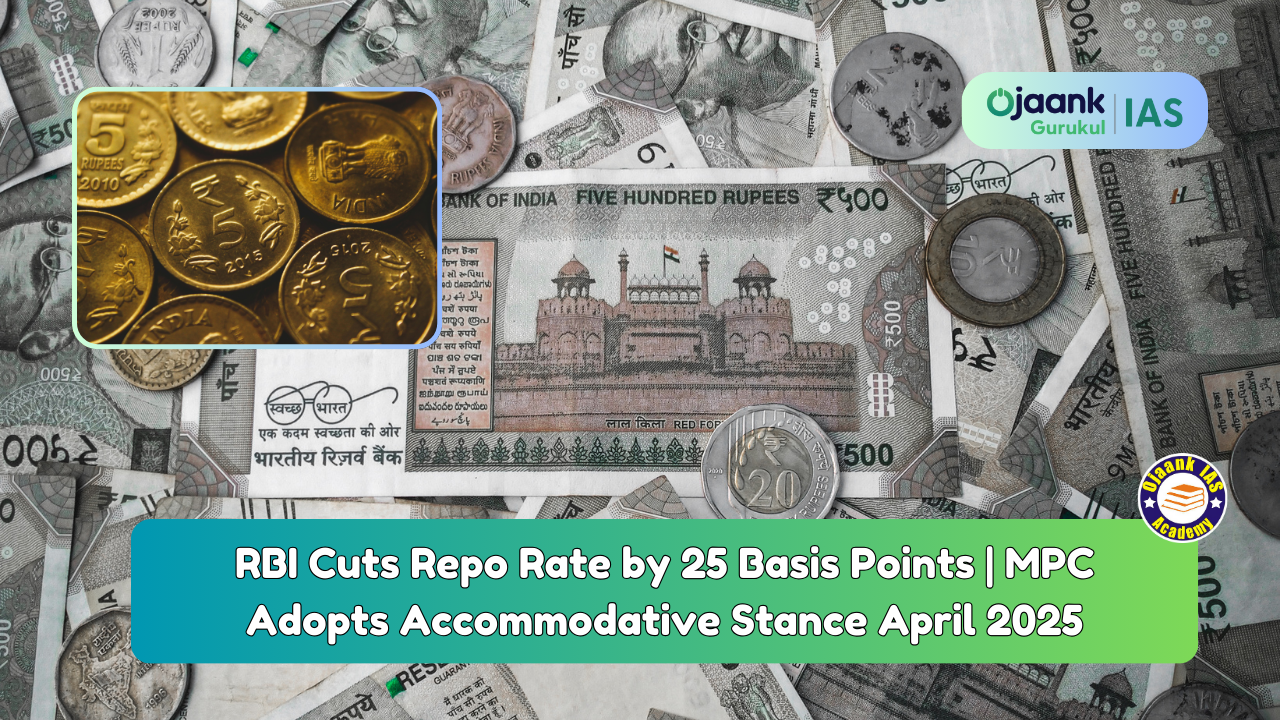todays current affairs 26th september 2023

Sikh migration to Canada
GS Paper II (International Relations)
Context: Hardeep Singh Nijjar's murderer, Indian agents, according to fresh information provided with India by the Canadian prime minister. A diplomatic standoff between Canada and India resulted from India's accusation that Canada was harbouring terrorists and radicals from the Khalistan region.

Sikh Diaspora in Canada:
The greatest Sikh population outside of India is found in Canada, where 2.1% of the country's population is made up of Sikhs.
Sikhs have been moving to Canada for more than a century, mostly due to their participation in the armed forces of the British Empire.
Sikhs travelled everywhere the British Empire spread, including to the Far East and East Africa.
Early Years of Sikh Migration:
During Queen Victoria's Diamond Jubilee in 1897, the first Sikh immigrants to Canada arrived. One of the earliest Sikh settlers in Canada that year was Kesur Singh, a Risaldar Major in the British India Army.
Early in the 20th century, a sizable influx of Sikh people moved to Canada, the most of whom took jobs as labourers in the industrial and forestry industries of Ontario and British Columbia.
Early Sikh immigrants were frequently sojourners who intended to stay for a little period of time before sending their funds back to India.
Challenges and Pushback:
Locals were hostile towards Sikh immigration because they were seen as employment rivals. They also came across biases based on race and culture.
The Canadian government implemented strict controls as a result of growing public criticism, such as forcing Asian immigrants to have a certain amount of money and to travel continuously from their country of origin.
A ship carrying 376 South Asian immigrants, predominantly Sikhs, was delayed at Vancouver for two months before being compelled to return to Asia in the Komagata Maru event in 1914. Deaths were the outcome of this tragedy.
Turning Point after World War II:
Canada's immigration policy changed after World War II for a number of reasons, including a dedication to the United Nations' position against racial discrimination, economic growth, and a need for labourers.
A decrease in European immigration resulted from Canada's decision to import human capital from developing nations.
In 1967, Canada implemented the "points system," which did away with racial biases and made skills the primary criterion for admittance of non-dependent relatives.
Conclusion:
Over a century has passed since the first Sikhs immigrated to Canada, during which obstacles, discrimination, and policy changes have been present.
Today's growing Sikh community in Canada is a testament to the country's transformation from its early problems to a more welcoming and skill-based immigration system.
Source: The Hindu
Global Debt
GS Paper III (Economy)
Context: By the end of June 2023, according to the Institute of International Finance (IIF), worldwide debt had increased by about $100 trillion during the previous ten years, reaching an all-time high of $307 trillion.

Understanding Global Debt:
Debt on a global scale includes borrowings from people, private companies, and sovereign governments.
The private sector borrows mostly for investments, whereas governments borrow to fund a variety of costs and pay interest on previous loans.
Drivers of Rising Global Debt:
The nominal global debt as well as the debt-to-GDP ratio have both been rising over time. The pandemic temporarily stopped this tendency as the economy stagnated, but debt levels have already begun to climb once more.
Advanced economies including the U.S., U.K., Japan, and France accounted for more than 80% of the growth in global debt during the first half. China, India, and Brazil showed notable debt increases among rising markets.
Despite forecasts that the demand for loans would decline as a result of higher interest rates, the amount of global debt rose by $10 trillion in the first half of 2023. This pattern is not unusual because larger savings, when invested, frequently result in higher debt levels.
Inflation’s Impact on Debt:
The previous seven straight quarters of falling global debt as a proportion of GDP before 2023 are more fascinating than growing debt levels.
According to the IIF, this reduction was caused by price inflation, which allowed governments to reduce their local currency-denominated loans. In order to pay off government debt, a process known as "inflating away debt" entails central banks issuing additional money, which indirectly taxes the economy by driving up prices.
Causes for Concern:
Concerns regarding the sustainability of debt are frequently raised by rising levels of debt globally, particularly when it comes to government debt fueled by careless borrowing for populist programmes.
Governments with significant debt loads may find it difficult to pay back their debt when central banks boost interest rates to fight inflation. Rising interest rates could result in defaults or attempts to inflate the debt away.
The IIF issues a warning that the global financial system is ill-equipped to deal with unmanageable amounts of domestic debt.
Rapidly rising private debt levels are also cause for concern since they are frequently associated with uncontrollable booms that can lead to economic catastrophes, especially when such lending lacks real savings.
The recent global financial crisis of 2008 provides as an illustration of how cheap lending policies, like those of the U.S. Federal Reserve, fuel an economic boom before an economic collapse.
Conclusion:
Given its potential effects on economic stability, sustainability, and the ability of financial systems to resolve increasing debt concerns, the rise in global debt deserves attention.
Source: The Hindu
Draft Patent Amendment Rules
GS Paper III (Economy)
Context: Draught regulations for patent modification were released by India's Department for Promotion of Industry and Internal Trade. If implemented, these reforms might have a big impact on patients and pharmaceutical businesses, especially in the developing world.

Draft Patent Amendment Rules: Key takeaways
The addition of variable costs for pre-grant opposition filings is a noteworthy change that might significantly increase the financial burden on patient groups and civil society organisations.
The clause allowing the controller to judge whether a person's or a civil society organization's submission is maintainable in order to submit pre-grant oppositions is particularly troubling.
Impact on Public Health Safeguards:
Pre-grant resistance protects the public health from practises like patent evergreening and the issuance of unauthorised monopolies. It guarantees continuing availability of low-cost, high-quality generic medications.
There are worries that the draught amendment rules might weaken these protections and perhaps prolong patent protection based on flimsy justifications. Large pharmaceutical firms have long campaigned to have India's patent rules changed to eliminate important protections.
Critiques and Concerns:
The rules' need for controller-determined maintainability is criticised for lacking a reasonable foundation and for perhaps causing further issues. Decisions regarding pre-grant opposition filings' eligibility might become arbitrary in the absence of defined criteria.
Some people think that because pharmaceutical firms frequently try to reduce pre-grant opposition, the government is siding with their interests.
Pre-grant objection, a unique clause in the Indian Patent Act, has proved essential in defending the interests of the public health. It would be disastrous for patients and the generic medication industry to weaken this clause.
Precedents of Successful Opposition:
Patient advocacy groups and civil society organisations filed pre-grant opposition, which resulted in the rejection of pharmaceutical firms' attempts to extend existing patents based on flimsy claims of "novel invention."
Examples include contesting the patentability of medications like Tenofovir Disoproxil Fumarate (TDF), Nevirapine, Glivec (imatinib mesylate), Zidovudine/Lamivudine (anti-HIV meds), and Lopinavir/Ritonavir (anti-HIV pharmaceuticals).
Potential Ramifications:
Patients in India and the developing world, who rely substantially on India's manufacture of inexpensive generic medications and vaccines, might be disproportionately affected by the planned changes.
Pre-grant opposition may become weaker, endangering patients' access to necessary medications and harming the generic drug business.
Experts stress that any weakening of this clause in the Indian Patent Act would be a substantial change, endangering consumers' access to reasonably priced treatments and giving pharmaceutical companies more market sway.
Conclusion:
The proposed patent modification regulations have raised worries that they might weaken important protections, thereby favouring large pharmaceutical companies while endangering patients' access to reasonably priced medications.
Pre-grant opposition's crucial function in defending the interests of the public health is under jeopardy, which raises concerns about the effects on patients in India and elsewhere.
Source: Indian Express
Tripitaka
GS Paper I (Art & Culture)
Context: A group from Hyderabad's Buddhavanam Theme Park travelled extensively in Sri Lanka. On the Colombo-Kandy road are the Buddhist rock-cut caves from the third century BC.

Why such move?
The group emphasised that the Tripitaka (Sutra, Vinaya, and Abhidhamma pitakas), or teachings of Lord Buddha, were initially conveyed verbally.
The writing of these lessons on palm leaves, however, took place in Sri Lanka under the patronage of the country's ruler at the time, Devanampiya Tissa, a monarch who lived at the same time as ruler Asoka.
The beginning of Buddhist writing in India was signalled by this occasion.
About Tripitaka:
The holy Buddhist books that make up the Tripitaka, sometimes referred to as the Pali Canon, are the cornerstones of the Theravada Buddhist tradition.
The Tripitaka, which is made up of three parts, literally translates as "Three Baskets."
History and significance:
From the time of the Gautama Buddha in the fifth century BCE until it was finally written down in the first century BCE, the Tripitaka was passed orally.
It has enormous historical and theological value since it contains the Buddha's and his well-known followers' teachings, discourses, rules, and directions.
Composition of the Tripitaka:
Vinaya Pitaka (Basket of Discipline):
consists of the regulations and standards for monastic conduct in the Buddhist society.
gives specific guidelines for the behaviour that monks and nuns should exhibit.
includes a variety of topics, including as codes of conduct, ethical standards, and methods for resolving conflicts.
reveals details about the monastic lifestyle, the Sangha's structure, and the function of the monastic rule in preserving peace and moral behaviour.
Sutta Pitaka (Basket of Discourses):
Contains the speeches and lessons given by Buddha and his closest followers.
contains a sizable collection of talks on a variety of subjects, including morality, meditation, philosophy, and social concerns.
consists of several collections of Suttas (discourses), known as Nikayas, including the Digha Nikaya (Long Discourses), Majjhima Nikaya (Middle-Length Discourses), Samyutta Nikaya (Connected Discourses), and Anguttara Nikaya (Numerical Discourses).
explains the deep teachings of the Buddha on dependent origination, the Noble Eightfold Path, the Four Noble Truths, and other key ideas in Buddhism.
Abhidhamma Pitaka (Basket of Higher Teachings):
Analyses Buddhist psychology and philosophy in detail and in a methodical manner.
Investigates in great detail the nature of consciousness, reality, and the mind.
Presents the teachings in a more analytical and technical way, providing a sophisticated knowledge of Buddhist principles.
Divided into seven sections, together referred to as the Abhidhamma books, which explore issues like awareness, mental aspects, materials, and the road to freedom.
Deepens our understanding of the inner workings of the mind and existence's ultimate essence.
Features and Characteristics:
In the Theravada school, the Tripitaka is regarded as the most reliable and authentic collection of Buddhist scriptures.
The majority of the works are written in Pali, an ancient Indian tongue related to that spoken by the Buddha.
The Tripitaka offers thorough instruction for practitioners in many facets of life on a wide range of subjects.
According to popular belief, the Tripitaka contains the Buddha's initial teachings and offers insights into his knowledge and philosophy.
Source: Indian Express
Gurez Valley
GS Paper I (Geography)
Context: The Mushkoh valley in the Drass Sector of Kargil, Ladakh, is now connected to the high-altitude passes inside the Gurez valley in northern Kashmir. The 1999 conflict saw key events take place in this area.
Tourists may now travel over the newly constructed 130-kilometer route, which connects these two valleys via one of its highest passes, Kaobal Gali, which is located in Gurez at an elevation of 4,166.9 metres.

About Gurez Valley:
Gurez, located in the Kashmir valley, is close to the Line of Control, which separates it from the Astore and Neelum districts of Kashmir that are governed by Pakistan.
The majority of the locals are ethnic Dards/Shins, who speak the Shina language and dress similarly to their counterparts in Gilgit-Baltistan, which is controlled by Pakistan.
The Zumba yak, a smaller breed than other yaks, is famous for the Buduaab settlement in Gurez Valley.
The Kargil conflict was significantly impacted by the Gurez valley.
The Kishanganga river serves as the border's various delineation points and is located near to the Line of Control (LoC).
There are settlements in the Gurez valley that are totally made of wood homes and bereft of contemporary urban building supplies.
The area is home to a variety of flora and fauna, including animals like marmots, ibex, musk deer, snow leopards, and Himalayan brown bears.
The Gurez valley, home to about 38,000 people, has already hosted an amazing 50,000 visitors this year.
Mushkoh Valley:
The Mushkoh valley, which located in Dras, Ladakh, is also known as the "valley of wild tulips."
The intense war between India and Pakistan that took place at Tiger Hill and left many people dead on both sides made the valley famous.
Both the endangered Himalayan yew and brilliant wild tulip blossoms may be seen in Mushkoh Valley's meadows.
Source: Indian Express
Facts for Prelims
Nari Adalats:
The Sambal sub-scheme of Mission Shakti, which is run by the Ministry of Women and Child Development, includes Nari Adalat.
Mission Shakti seeks to increase the security, safety, and empowerment of women.
Women have access to Nari Adalat as an alternative Grievance Redressal Mechanism to address minor issues (harassment, loss of rights, etc.) at the Gramme Panachayat level.
This platform will be used to interact with the public in order to raise awareness, gather input for programme enhancement, and ensure efficient service delivery to the general public.
Galactic Tides:

Galactic tides are caused by gravitational forces inside a galaxy and happen when celestial bodies like stars and gas clouds interact.
The evolution of a galaxy is influenced by these tidal forces in several ways.
By encouraging star formation and uprooting smaller star systems, they can alter the geometry of a galaxy.
They have an impact on the galaxies' supermassive black holes.
Understanding galactic tides is essential for astronomers to comprehend the intricate dynamics and cosmic development of galaxies.
Ephemerals:

Some plant species, known as ephemerals, wait all year before blooming only during the monsoon.
For instance, wild yam, lilies, and ground orchids. For native pollinators, these blooms provide as a vital supply of nectar and pollen, protecting the ecology.
End of May through June, July, August, and September are the blooming months.
Ephemerals come in annual and perennial varieties.
Annual ephemerals are only visible for a very little time and create new individuals every year. At the conclusion of their life cycle, they produce seeds and go dormant until the next year.
The same person exists in perennials, but new components (such as the stem and flowers) are developed.
Copyright 2022 power by Ojaank Ias




